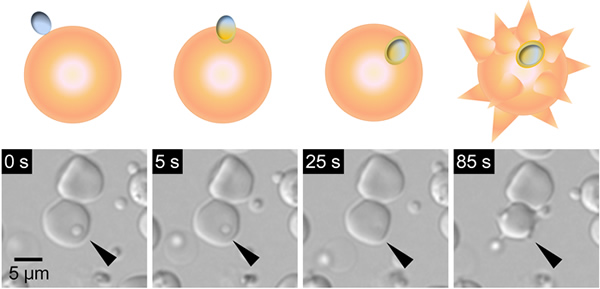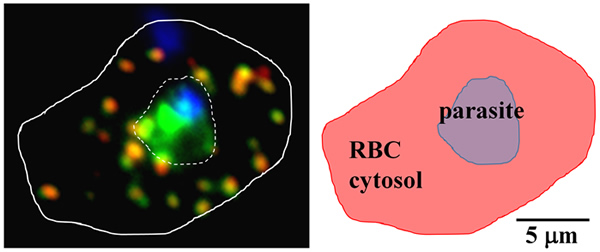Professor Osamu Kaneko

Speciality / Research theme / Keywords
Protozoology, Malaria, Molecular and ⅽellular biology, Molecular evolution, Population geneticsSupervision
Masters ProgrammeQualifications
MD, PhD
Personal/work Web page addresses
http://www.tm.nagasaki-u.ac.jp/protozoology/eng/
Research gate or Linked-in account links
http://www.researchgate.net/profile/Osamu_Kaneko2
Affiliation(s)
- Department of Protozoology, Institute of Tropical Medicine (NEKKEN), Nagasaki University, Japan.
- Department of Medical Protozoology, Graduate School of Biomedical Sciences, Nagasaki University, Japan
Background
I graduated from Osaka City University Medical School, Japan in 1990 and then trained as an Orthopedic Surgeon for 2 years. Following that, I decided to spend 4 years studying malaria in Osaka City University’s Graduate School of Medicine. After I received my PhD, I worked in the Laboratory of Parasitic Diseases (Louis H. Miller Lab), NIAID, NIH, USA from 1997 to 1999. In 2000, I became a faculty member in the Department of Molecular Parasitology (Prof. Motomi Torii Lab), Ehime University School of Medicine, Japan and joined the Institute of Tropical Medicine, Nagasaki University as a full time professor in 2007. I was inspired to study malaria by the Prof. Kazuyuki Tanabe’s lecture in 1986. For more details, please read my memoir of Kazuyuki Tanabe published in Parasitol Int (2014)
Teaching
School of Tropical Medicine and Global Health
I am responsible for lectures and practices on Medical Protozoology, including malaria, African trypanosomiasis (sleeping sickness), American trypanosomiasis (Chagas disease), leishmaniasis, and intestinal protozoan infections.
Other teachings at Nagasaki University
- Training course of Tropical MedicineI am responsible for lectures and practices on Medical Protozoology.
- Liberal arts Education “Safety and Security of the Medical Field”I give lectures on Medical Protozoology.
- School of Medical Sciences, School of Medicine (Medical Microbiology and Parasitology)I give lectures and guide practices on Medical Protozoology.
- Graduate School of Biomedical Sciences (Infectious Diseases)- I am responsible for lectures (Medical Parasitology) and thesis research in the Program for Nurturing Global Leaders in Tropical and Emerging Communicable Diseases (TECD).- I am responsible for seminars, practices, and thesis research in the Program alongside TECD.
Research
Malaria is a huge burden and responsible for many deaths in large areas of the tropical and sub-tropical world. In order to design and implement effective disease intervention strategies, I believe that one of the key priorities in malaria research should be the strengthening of our understanding of the basic biology of the parasite. My team is currently investigating some fundamental aspects of the parasite’s life cycle, such as the mechanisms behind red blood cell (RBC) invasion and the phenomenon of cytoadherence of parasite-infected RBCs using human malaria parasite Plasmodium falciparum, zoonotic malaria parasite P. knowlesi and rodent malaria parasite P. yoelii. I am also engaged in the field studies conducted in Malaysia to understand the P. knowlesi biology and epidemiology and develop novel intervention tools in collaboration with Dr. Kamruddin Ahmed (Universiti Malaysia Sabah) and P. falciparum drug resistance studies in Kenya and Democratic Republic of the Congo. We are also developing novel malaria vaccines against P. falciparum and P. knowlesi. RBC invasion by P. yoelii. Merozoite-stage parasite (arrowhead) invades into RBC within 30 seconds (0 – 25 s) and deformed RBC to spike-like shape (85 s).
RBC invasion by P. yoelii. Merozoite-stage parasite (arrowhead) invades into RBC within 30 seconds (0 – 25 s) and deformed RBC to spike-like shape (85 s). Recombinant protein (green) expressed in P. falciparum co-localized with Maurer’s cleft protein (red) seen in the RBC cytosol outside of the malaria parasite. Nucleus is visualized with blue color.
Recombinant protein (green) expressed in P. falciparum co-localized with Maurer’s cleft protein (red) seen in the RBC cytosol outside of the malaria parasite. Nucleus is visualized with blue color.
The country/countries where you work currently
- Malaysia
- Kenya
- Democratic Republic of the Congo
Five MOST IMPORTANT/INTERESTING recent publications
- Makau M, Kanoi BN, Mgawe C, Maina M, Bitshi M, Too EK, Naruse TK, Abkallo HM, Waweru H, Adung’o F, Kaneko O, Gitaka J. Presence of Plasmodium falciparum strains with artemisinin-resistant K13 mutation C469Y in Busia County, Western Kenya. Trop Med Health. 2024; 52(1):72
- Christensen P, Cinzah R, Suwanarusk R, Chua ACY, Kaneko O, Kyle DE, Aung HL, Matheson J, Bifani P, Renia L, Cook GM, Snounou G, Russell B. Extended blood stage sensitivity profiles of Plasmodium cynomolgi to doxycycline and tafenoquine, as a model for Plasmodium vivax. Antimicrob Agents Chemother. 2024; 68(5):e0028024.
- Chuang H, Sakaguchi M, Lucky AB, Yamagishi J, Katakai Y, Kawai S, Kaneko O. SICA-mediated cytoadhesion of Plasmodium knowlesi-infected red blood cells to human umbilical vein endothelial cells. Sci Rep. 2022; 12(1):14942.
- Chaiyawong N, Ishizaki T, Asada M, Hakimi H, Yahata K, Kaneko O. Distinct effects on the secretion of MTRAP and AMA1 in Plasmodium yoelii following deletion of acylated pleckstrin homology domain-containing protein. Parasitol Int. 2022; 86:102479.
-
-
Yahata K, Hart MN, Davies H, Asada M, Wassmer SC, Templeton TJ, Treeck M, Moon RW, Kaneko O. Gliding motility of Plasmodium merozoites. Proceedings of the National Academy of Proc Natl Acad Sci USA. 2021; 118(48):e2114442118.
-
Message
When I was a medical student, I visited many tropical and subtropical countries and recognized that infectious diseases were still huge burdens in the world. Then, one day in a parasitology class, I learned that the disease malaria was a major problem, and thereafter I was fascinated by malaria and its causative pathogen, Plasmodium. Now I am conducting research to elucidate the molecular mechanism of host cell invasion and modification mechanisms by this parasite, toward finding weak points to combat the disease malaria.
